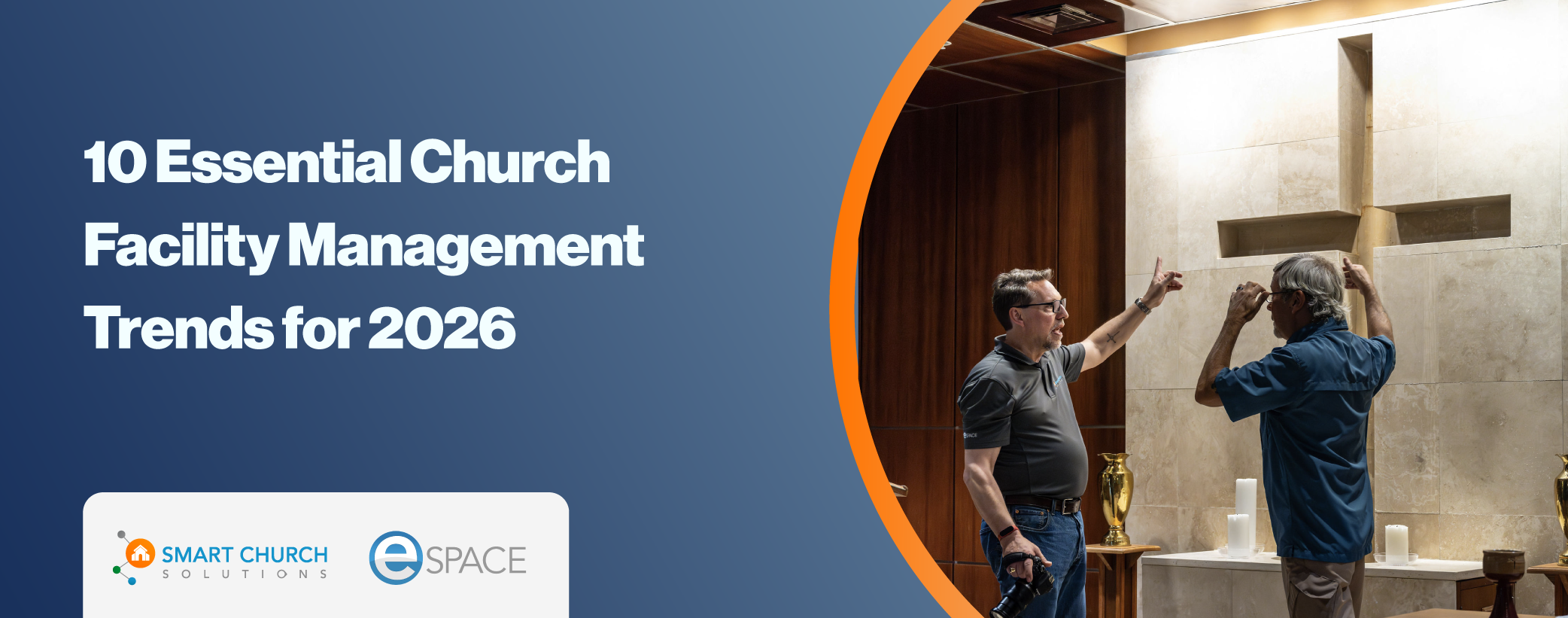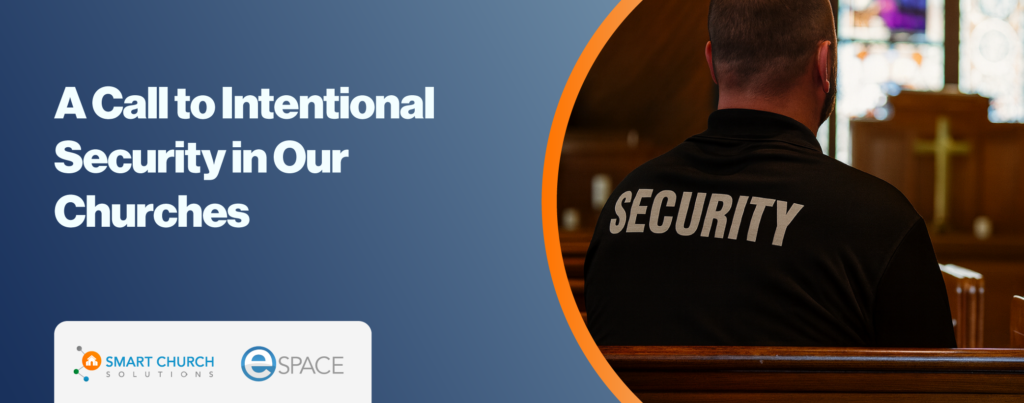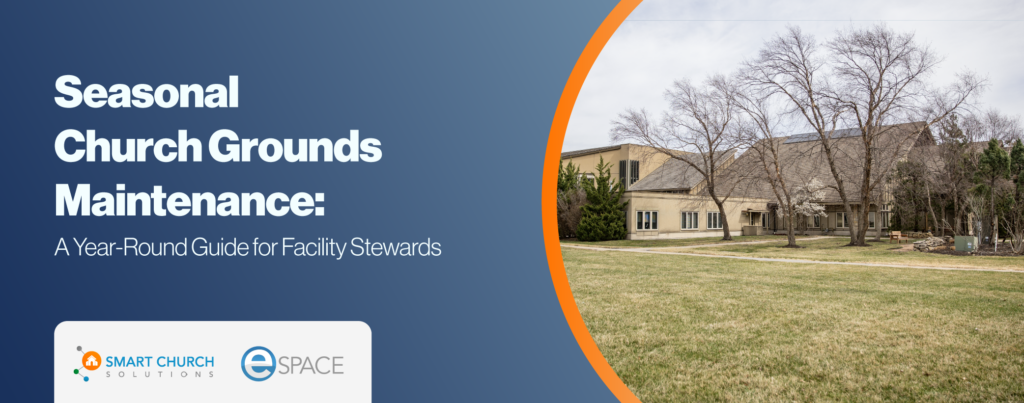What Faith-Based Organizations Need to Know
The landscape of church facility management is rapidly evolving, driven by technological advances, changing demographics, and new stewardship approaches. Based on insights from industry professionals and current market observations, here are the top 10 trends that will shape church facility management in 2026 and beyond.
1. AI-Powered Automation and Predictive Maintenance
Artificial intelligence is no longer science fiction—it’s becoming essential for effective facility stewardship. Churches are beginning to embrace AI-powered systems that can predict equipment failures before they occur, similar to how modern cars alert you when it’s time for an oil change.
Practical AI Applications for Churches:
- Detecting leaks early with water flow metering systems
- Identifying HVAC issues before breakdowns with analytics
- Scheduling maintenance based on usage patterns
- Optimizing energy through automation
While churches have traditionally been slow to adopt technology, churches that embrace AI automation now will see significant benefits in cost savings, efficiency, and stewardship. Even simple applications like automated lighting and climate control can make a substantial impact.
AI Tools That Save Time:
- Meeting transcription and summarization: Record meetings and get instant action items and summaries
- Standard Operating Procedure (SOP) generation: Create comprehensive SOPs in minutes instead of hours
- Data analysis: Transform maintenance reports and usage data into actionable insights
2. Cloud-Based Facility Management Platforms
Operating a church facility with pen-and-paper systems in 2026 is simply archaic and inefficient. As experienced facility managers retire and knowledge walks out the door, a cloud-based Computerized Maintenance Management System (CMMS) becomes crucial for continuity.
Why Cloud-Based Systems Matter:
- Knowledge preservation when staff transitions occur
- Improved efficiency through streamlined processes
- Better equipment management and maintenance tracking
- Enhanced collaboration among staff and volunteers
Churches often look for the cheapest software options, but investing in quality cloud-based platforms pays dividends through improved stewardship and operational efficiency. The younger generation entering facility management roles expects these digital tools and can often help implement and manage them effectively.
3. Digital Tools for Emergency Preparedness
Security and safety concerns in churches have increased significantly, making digital emergency preparedness tools essential. Many churches need comprehensive systems to handle various emergency scenarios.
Key Digital Emergency Tools:
- Advanced camera systems with facial recognition capabilities
- Automated weather alert systems for extreme weather events
- Mass communication platforms for emergency notifications
- Digital response coordination tools for emergency teams
These systems can help prevent incidents before they escalate and ensure rapid, coordinated responses when emergencies occur. Integration with existing facility management systems creates a comprehensive safety network.
4. IoT Integration with Facility Management Systems
The Internet of Things (IoT) is transforming how churches monitor and manage their facilities. Integrating IoT devices with a CMMS—such as eSPACE—enables powerful automation and monitoring capabilities.
IoT Applications in Churches:
- Occupancy sensors for dynamic space usage management
- Smart HVAC controls that adjust based on actual occupancy
- Real-time facility monitoring through visual dashboards
- Energy optimization based on usage patterns
Starting with basic building blocks and expanding IoT integration over time allows churches to build comprehensive facility monitoring systems while managing costs effectively gradually.
5. Sustainability and Creation Care Initiatives
Many churches are embracing “creation care” or environmental stewardship as part of their ministry. This trend toward sustainability affects facility management decisions and long-term planning.
Sustainable Facility Management Strategies:
- Energy-efficient lighting and HVAC systems with automated controls
- Waste reduction programs, including better recycling management
- Water conservation through smart landscaping and efficient fixtures
- Equipment repurposing instead of disposal (like turning old pews into creative worship elements)
Some denominations, like the Episcopal Church, have set ambitious goals for congregations to become carbon net-zero by 2030. This requires strategic facility management planning and investment in efficient systems.
6. Tech-Savvy Facility Leadership
The traditional facilities workforce is aging, with mass retirements expected in the next 2-5 years. This creates opportunities for tech-savvy professionals who understand both facility management and modern technology.
The New Facility Manager Profile:
- Digital fluency with cloud-based systems and mobile apps
- Understanding of IoT and analytics for strategic facility management
- Ability to leverage AI tools for efficiency improvements
- Comfort with data-driven decision making
Churches need to invest in training current staff or recruiting facility managers who can navigate both traditional building systems and modern technology platforms.
7. Enhanced Volunteer Coordination Through Digital Tools
Most churches rely heavily on volunteers for facility maintenance and management. Digital tools can dramatically improve volunteer coordination and task management.
Digital Volunteer Management Features:
- Automated scheduling and calendar management
- Task assignments delivered via email or mobile app
- Progress tracking without constant follow-up calls
- Work order systems that streamline communication
Moving beyond phone calls and sticky notes to comprehensive digital volunteer management systems improves efficiency and volunteer satisfaction.
8. Strategic Outsourcing vs. In-House Management
Churches are increasingly evaluating which services to outsource versus manage internally. This strategic approach to staffing can improve both quality and cost-effectiveness.
Outsourcing Considerations:
- Custodial services for churches without complex daily schedules
- Specialized maintenance requiring professional expertise
- Seasonal services like landscaping or snow removal
- Technology support for complex systems
The key is finding the right balance between maintaining control over important functions while leveraging professional services where they add value.
9. Professional Networks and Peer Connections
Facility managers cannot operate in isolation. Building connections with peers through conferences, online groups, and professional organizations is increasingly important.
Essential Networking Opportunities:
- National Association of Church Facilities Managers (NACFM) with local chapters
- The Church Network’s annual facilities fast-track
- Church Facilities Expo (CFX) for broader industry trends
- Texas Ministry Conference for intensive workshops
- Online communities and Facebook groups for ongoing support
These connections provide invaluable support for problem-solving, sharing best practices, and staying current with industry trends.
10. Elevated Role in Organizational Strategy
The most significant trend is the elevation of facility managers from “the person who fixes things” to strategic team members involved in organizational planning and decision-making.
Strategic Facility Management Involvement:
- Space planning and utilization analysis for ministry growth
- Budget planning for major facility investments
- Risk assessment for new programs and activities
- Lifecycle planning for equipment and building systems
Churches that include facility managers in strategic conversations see better outcomes, reduced costs, and fewer crises. This professional recognition aligns with broader industry trends recognizing facility management as a strategic function.
Preparing for the Future
These trends represent both challenges and opportunities for church facility management. Organizations that proactively embrace technology, invest in professional development, and elevate facility management to its rightful strategic role will experience improved stewardship, reduced costs, and better ministry outcomes.
The key is starting now—waiting five years to implement these trends will leave churches significantly behind. Begin with one or two areas where you can make immediate improvements, then gradually build a comprehensive modern facility management approach that serves your congregation’s mission effectively.
As we look toward 2026, the churches that thrive will be those that view facility management not as a necessary expense, but as a strategic ministry that enables and enhances all other aspects of congregational life.







